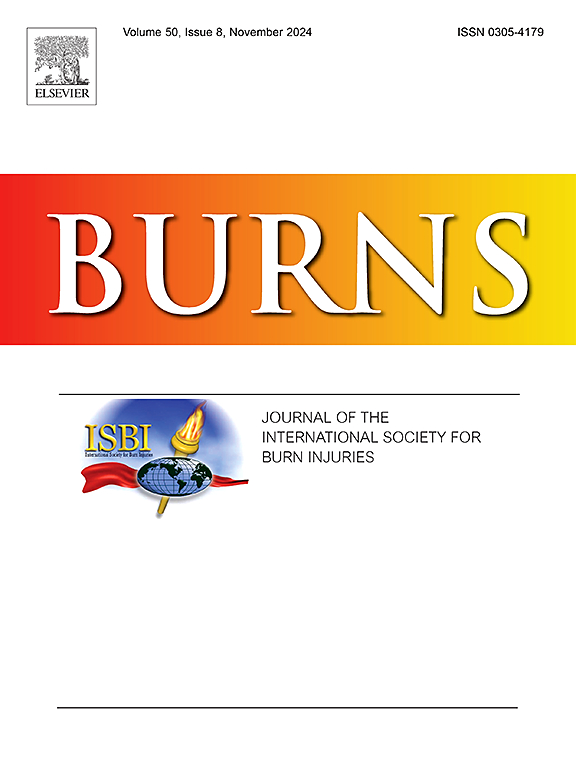Multi-omics analysis to explore the molecular mechanisms related to keloid
IF 3.2
3区 医学
Q2 CRITICAL CARE MEDICINE
引用次数: 0
Abstract
Background
Keloid is a benign skin tumor that result from abnormal wound healing and excessive collagen deposition. The pathogenesis is believed to be linked to genetic predisposition and immune imbalance, although the precise mechanisms remain poorly understood. Current therapeutic approaches may not consistently yield satisfactory outcomes and are often accompanied by potential side effects and risks. The high recurrence rate and refractory nature of keloid nodules present significant challenges and uncertainties in their management. Given the lack of effective treatment strategies, it is essential to identify key molecular pathways and potential therapeutic targets for keloid.
Objective
This study aimed to identify the potential pathogenic mechanisms, hub genes, and immune cell involvement in keloid formation, with the goal of providing novel insights for targeted therapies.
Methods
We utilized a combination of bulk RNA sequencing to analyze gene expression profiles in keloid tissues. Differentially expressed genes (DEGs) were identified and subjected to pathway enrichment analysis to reveal key biological processes involved in keloid pathogenesis. Mendelian randomization was performed to investigate the causal relationship between genetic factors and keloid formation, identifying potential hub genes. Immune infiltration analysis was conducted to determine the role of specific immune cells in keloid development. Subsequently, Gene Set Enrichment Analysis (GSEA) and Gene Set Variation Analysis (GSVA) were performed to investigate the functional pathways associated with the hub genes. Network analysis was employed to identify transcription factors, miRNAs, and potential drugs in the Connectivity Map associated with the hub genes. Single-cell RNA sequencing was also used to identify cell-specific expression patterns of these genes.
Results
Pathway enrichment analysis highlighted the association of keloid pathogenesis with cell proliferation and division, providing insights into the molecular processes involved. Mendelian randomization revealed that DUSP1 acts as an inhibitor of keloid formation, while HOXA5 promotes keloid pathogenesis. Immune infiltration analysis suggested that mast cells and macrophages play critical roles in the disease's progression. Based on hub gene analysis, the IL17 signaling pathway emerged as a key pathway implicated in keloid development. Further drug prediction models identified 9-methyl-5H-6-thia-4, 5-diaza-chrysene-6, 6-dioxide, zebularine, temozolomide and valproic acid targeting these hub genes.
Conclusion
DUSP1 and HOXA5 are hub genes in keloid pathogenesis, with DUSP1 acting as an inhibitor and HOXA5 as a promoter of disease progression. Targeting the regulatory networks associated with these genes could provide novel therapeutic strategies. Mast cells and macrophages are identified as critical immune cell types involved in the disease process. Additionally, the IL17 signaling pathway plays a crucial role in keloid development, highlighting its potential as a therapeutic target. These findings suggest that a multi-target approach focusing on these pathways could offer effective treatment options for keloid patients.
求助全文
约1分钟内获得全文
求助全文
来源期刊

Burns
医学-皮肤病学
CiteScore
4.50
自引率
18.50%
发文量
304
审稿时长
72 days
期刊介绍:
Burns aims to foster the exchange of information among all engaged in preventing and treating the effects of burns. The journal focuses on clinical, scientific and social aspects of these injuries and covers the prevention of the injury, the epidemiology of such injuries and all aspects of treatment including development of new techniques and technologies and verification of existing ones. Regular features include clinical and scientific papers, state of the art reviews and descriptions of burn-care in practice.
Topics covered by Burns include: the effects of smoke on man and animals, their tissues and cells; the responses to and treatment of patients and animals with chemical injuries to the skin; the biological and clinical effects of cold injuries; surgical techniques which are, or may be relevant to the treatment of burned patients during the acute or reconstructive phase following injury; well controlled laboratory studies of the effectiveness of anti-microbial agents on infection and new materials on scarring and healing; inflammatory responses to injury, effectiveness of related agents and other compounds used to modify the physiological and cellular responses to the injury; experimental studies of burns and the outcome of burn wound healing; regenerative medicine concerning the skin.
 求助内容:
求助内容: 应助结果提醒方式:
应助结果提醒方式:


